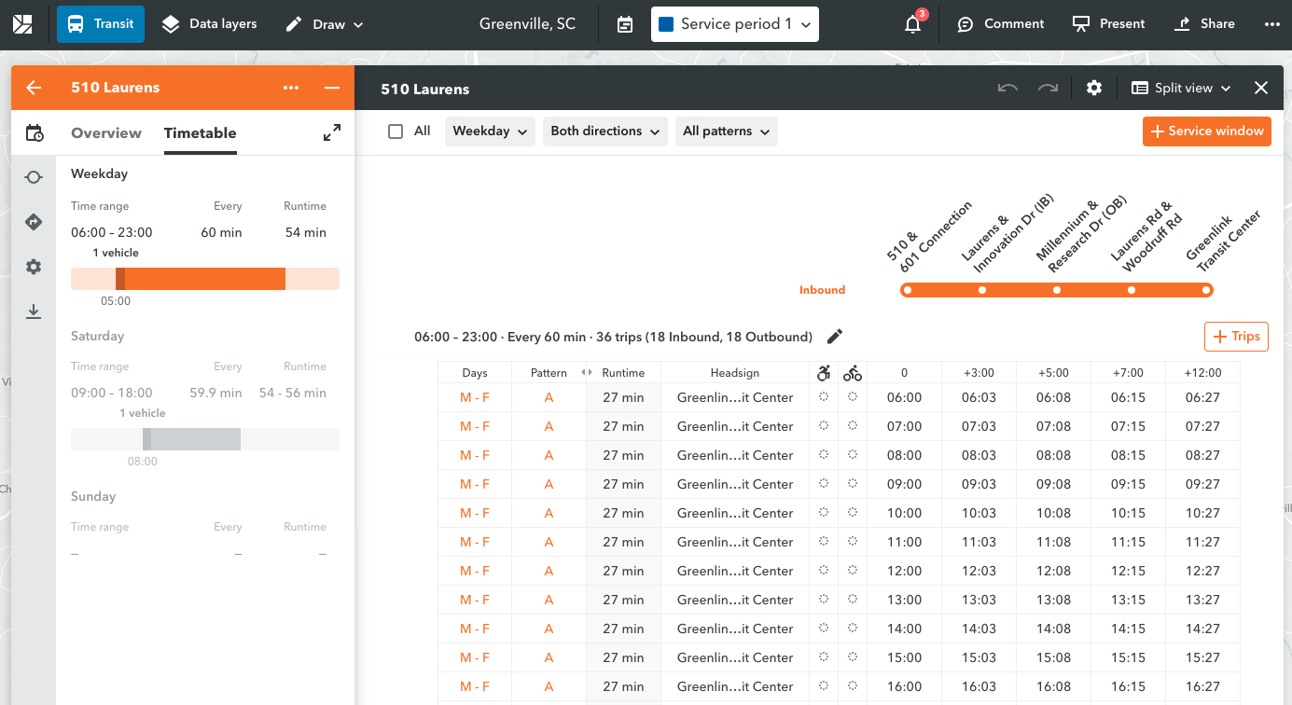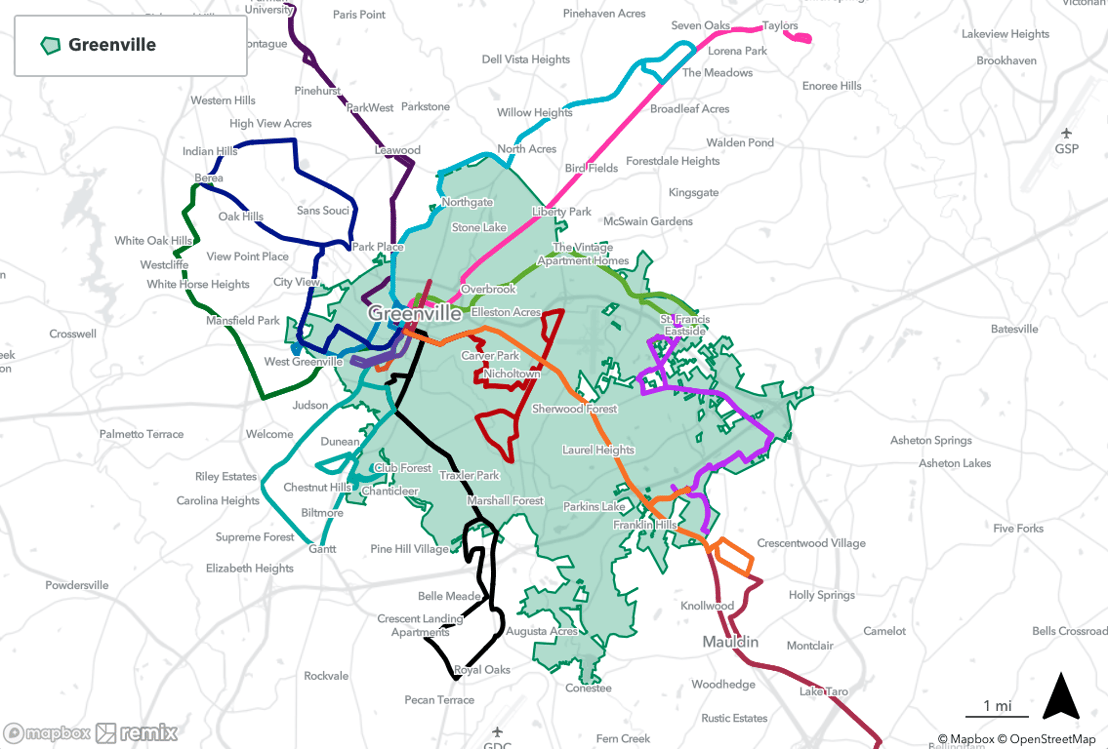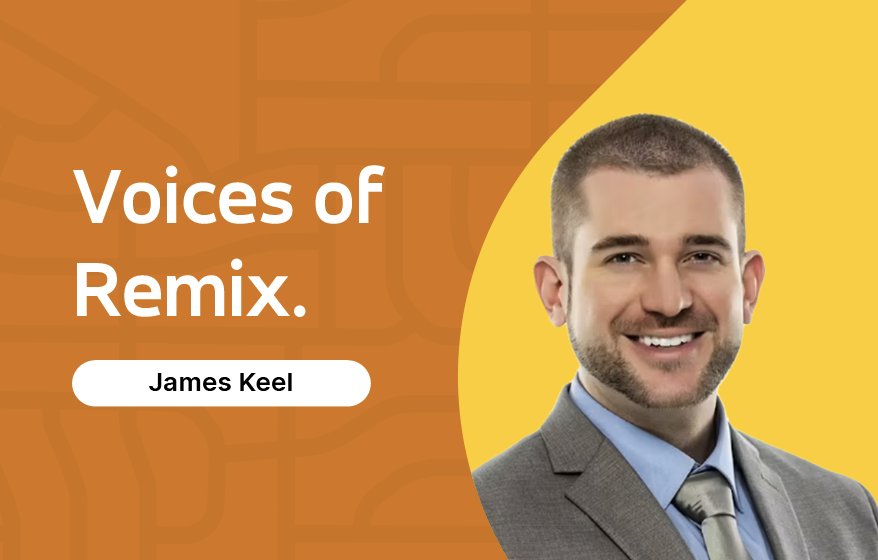Recommended reading: Want to back up and meet some more innovative transit leaders? Read our “Voices of Via and Remix” series. Want to dig in and learn more about the Remix product? Check out our Remix overview.
Spotlight on: James Keel, Public Transportation Director for the City of Greenville, South Carolina, and Executive Director at Greenville Transit Authority. In 2019, Keel was awarded 40 Under 40 in Transit for his consistent dedication to bringing new technology to transit operations that increase efficiency, lower costs and improve riders’ experience.
In April 2023, he testified before the US Senate Committee on Banking, Housing and Urban Affairs about local views on innovation in urban/suburban transit systems. Under Keel’s leadership, the agency successfully obtained a $20+ million competitive grants to facilitate electrification and construct a state-of-the-art maintenance facility. This year, his team successfully secured another $6 million in FTA funding to replace diesel buses with low-emission vehicles fueled by compressed natural gas.
Tell us a bit about your career path and how you’ve navigated your professional progression as a transit leader over the years.
JK: I began my career in transit as a college student. While attending East Carolina University (ECU), I trained and became a Student Bus Operator during my sophomore year. I was lucky to be mentored by the ECU Transit Director, Wood Davidson. Upon graduation, I had the opportunity to move into a supervisor position in fixed route operations and was later promoted to manager of the charter services unit. I came to Greenlink in December 2015 as General Manager and have been blessed with a talented and dedicated staff. Greenlink has provided ample leadership development and growth opportunities, and I was selected to lead the agency in May 2019.
A student bus operator — how was that experience?
JK: Having experienced firsthand the role of a bus operator was really valuable. I saw the challenges transit professionals face on a daily basis, which provided me with a deeper understanding of the realities faced by frontline staff and riders. Now in my executive position at Greenlink, this unique perspective helps me lead with empathy and develop strategies that address the specific needs of the transit network and the people it serves.
What made you opt for using transit scheduling software, such as Remix, as opposed to using pen and paper?
JK: So it was a no-brainer. When I began my tenure with Greenlink in 2015, we were using pen and paper combined with Excel spreadsheets to create run picks. It was a combination of sitting there with this massive piece of paper with everything on blocking, runcutting and rostering, and me typing it into a spreadsheet. That was a nightmare. Our switch to Remix was prompted by the need for efficient planning and scheduling work. At the time we were launching an ITS system with a different vendor and we needed a good General Transit Feed Specification (GTFS) file with a runcut.txt file. Our Transit Planner, Alex John, came across Remix. After soliciting scheduling software through a competitive process, we selected Remix in 2017.
- A message from Via: We’ve curated a detailed guide with everything you need to know about the government's new GTFS reporting standards, and how to get started. Read the guide.

The timetable of one of the major bus lines in Greenville, built in Remix.
What can you do with Remix that you couldn’t have done with pen and paper, or spreadsheet software?
JK: This is somewhat of a long list, but we appreciate the following capabilities: having multiple scenarios; being able to see discrepancies in data; error checking; visualization; being able to share maps with the public; being able to share and receive feedback from operations; generating paddles; generating a scheduling file or ODS file for the ITS system.
How has the workload of transit planning changed since you switched to Remix?
JK: Using Remix for our scheduling and planning software has made things much easier. From being able to have multiple versions of route designs, to being able to undo changes made to a route map (finally!), and auto-calculating service hours, to making sure a trip is doable. All things that added time to a planner’s workload are now streamlined. Generating a usable ODS file could take a day or two if using something else, but with Remix, it takes 15-20 minutes. There's been a significant time-saving for us.
From an operations standpoint, having the ability to plan and schedule deviations due to events and road closures is a huge benefit.
What are some of the key things you learned while exploring options for transit scheduling?
JK: The ability to have both planning and scheduling functions nested together was a benefit. One of Remix’s key components we continue to like is that it is web-based and accessible everywhere. The fact that it is an ever-evolving product is fascinating and continues to prove valuable.

The sprawling fixed-line transit network in Greenville, mapped in Remix.
What inspired you/your team to think differently about transit planning and scheduling?
JK: Our team has always been interested in technology and adopting solutions that make tasks easier — we want to make data-driven decisions that we can stand behind with reasoning and justifications. When it came to Remix, having a dynamic way to look at schedules, to plan, to see scenarios… it was a natural fit.
We updated our network expansion plan in 2021, and we did pull Remix data layers into it. We overlaid all of those routes and understand how those proposed improvements could ultimately benefit the system. The tool helped us answer many critical questions like how new routes overlay with the current system and better serve municipalities, and the best frequency and the number of vehicles for each route. Without Remix planning, we weren’t able to do that.
How does Remix help in your grant applications? Any data layers you found especially beneficial to demonstrate the impact of the proposed transit programs?
JK: Good news is that we were recently awarded $6.3M in funding from FTA to promote greener, more reliable transportation, and we did use some data from Remix in those applications. Layers of areas of persistent poverty helped us identify the disadvantaged communities. We also used Remix to understand the environmental justice that could be improved by introducing low-emission buses; the tool has been exceptionally helpful.
What challenges did you run into as you brought this new transit planning tool to work? How did you overcome them?
JK: We have had Remix now for years. Early on, the system didn’t support the “stop_code” as a part of the stops.txt file, so we had to use the “stop_id” for both numbers, export the data, then clean it up in Excel before uploading our GTFS. That has obviously now changed.
We look at Remix as a partner who listens — when we have feedback or ideas, we share that with the Remix team, and generally, those ideas either are formulated in the next software update, or a workaround is identified. Another challenge we face is training and onboarding new Greenlink team members to use Remix, especially if the role doesn’t interface with technology often. The Remix team is great at helping us get Greenlink’s staff the support and training they need.
Beyond using the Remix software, what kind of support does your team get from the team at Remix?
JK: Sometimes we get to be the first to try new features and rollouts — that is what happened with the new ODS standard as we switch ITS providers and deploy the new system with Equans. We have also beta-tested multiple features for Remix. Over the years, I have developed a good relationship with Ben, Remix’s product manager – which has been super helpful as we run into an issue or have a new feature request.

Greenlink Key Performance Indicators (KPIs) dashboard. Source: the City of Greenville.
What were the KPIs you established to evaluate your service’s performance? How has Remix helped you along the way?
JK: Our board of directors believes in transparency — Greenlink’s KPIs are publicly posted here . We use Remix to update our time points on a regular basis, to test connections, and for the creation of our GTFS — which feeds our ITS that allows us to get our monthly reports.
There are many government executives out there who recognize efficient, and easy transit planning is a problem in their community but feel they need more resources. Given your experience, what advice would you give them?
JK: I think, in general, there is some hesitancy on using software like this to improve your system – but once you try it, you’ll never go back. It is worth the investment for the ongoing improvement of your planning and scheduling efforts. But it is also worth noting that an agency needs to round out its internal staff with team members who will actually use them in order to get the true benefit.
What advice would you give to other city leaders seeking to re-invent transportation networks in their city?
JK: Be open-minded, avoid “political route planning”, and use proven methods to find out where people are and where they want to go. Trust staff (with relevant experience) to improve the system. Fund where needed, ask questions, and continuously improve.

Data Journalist




